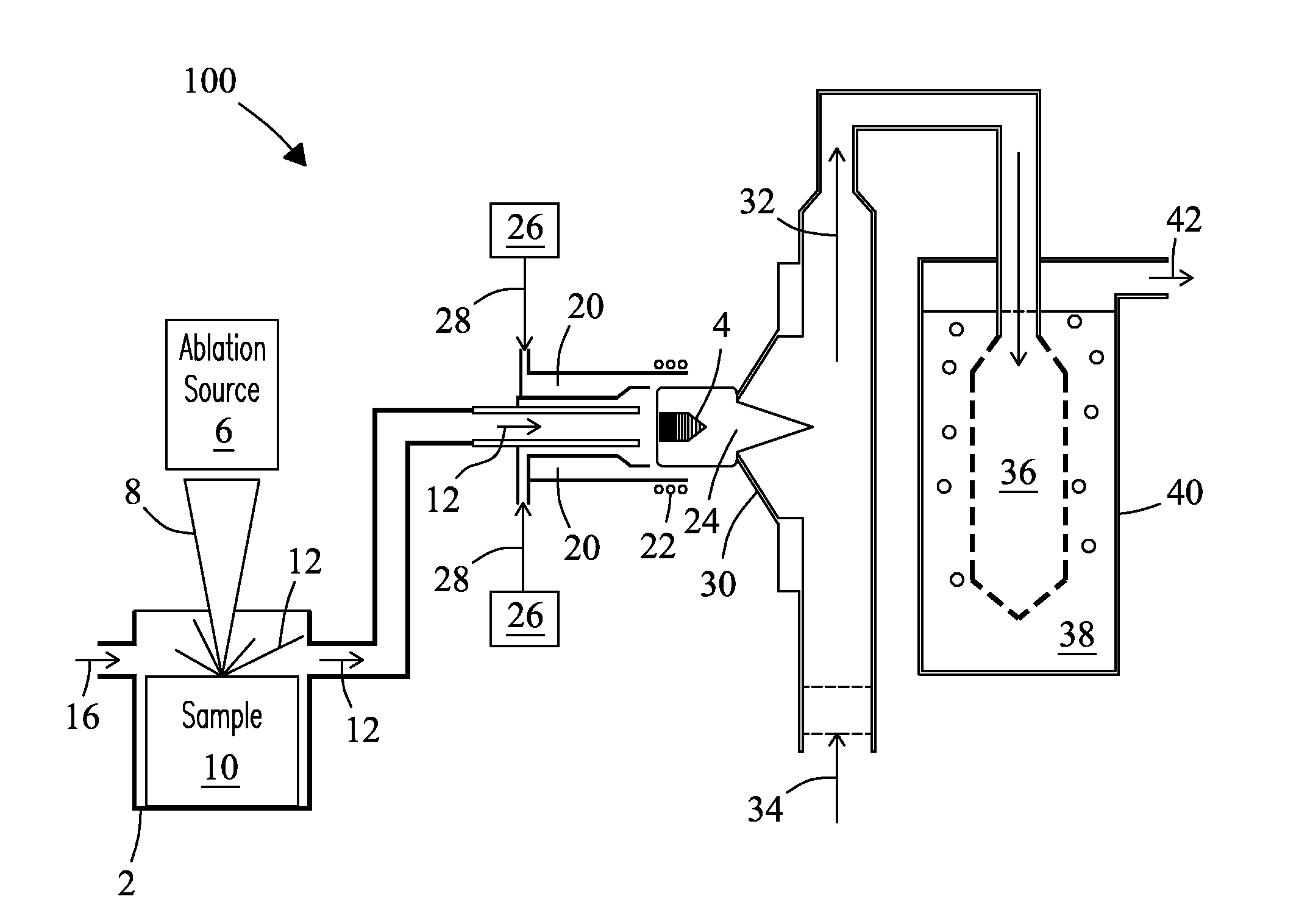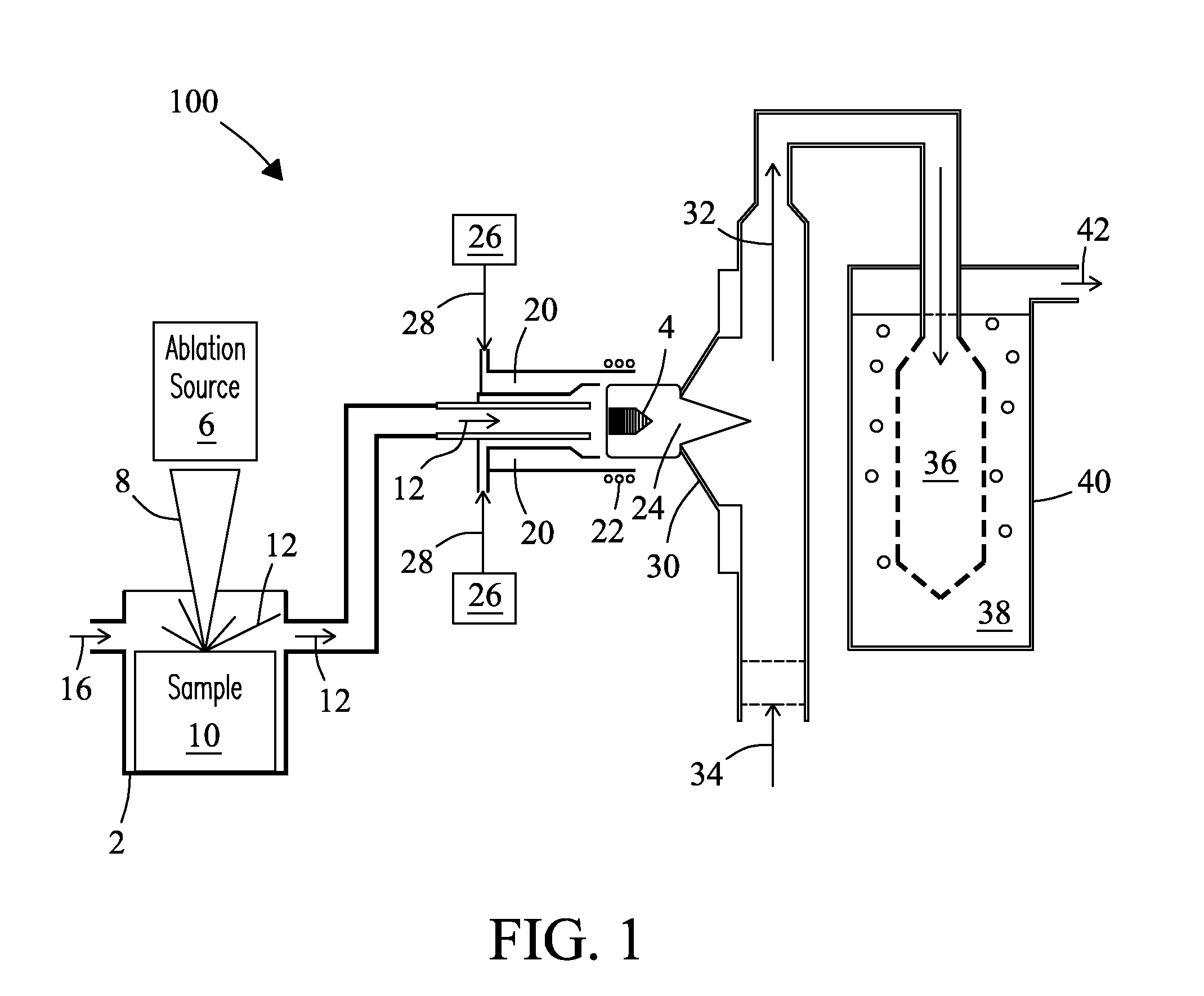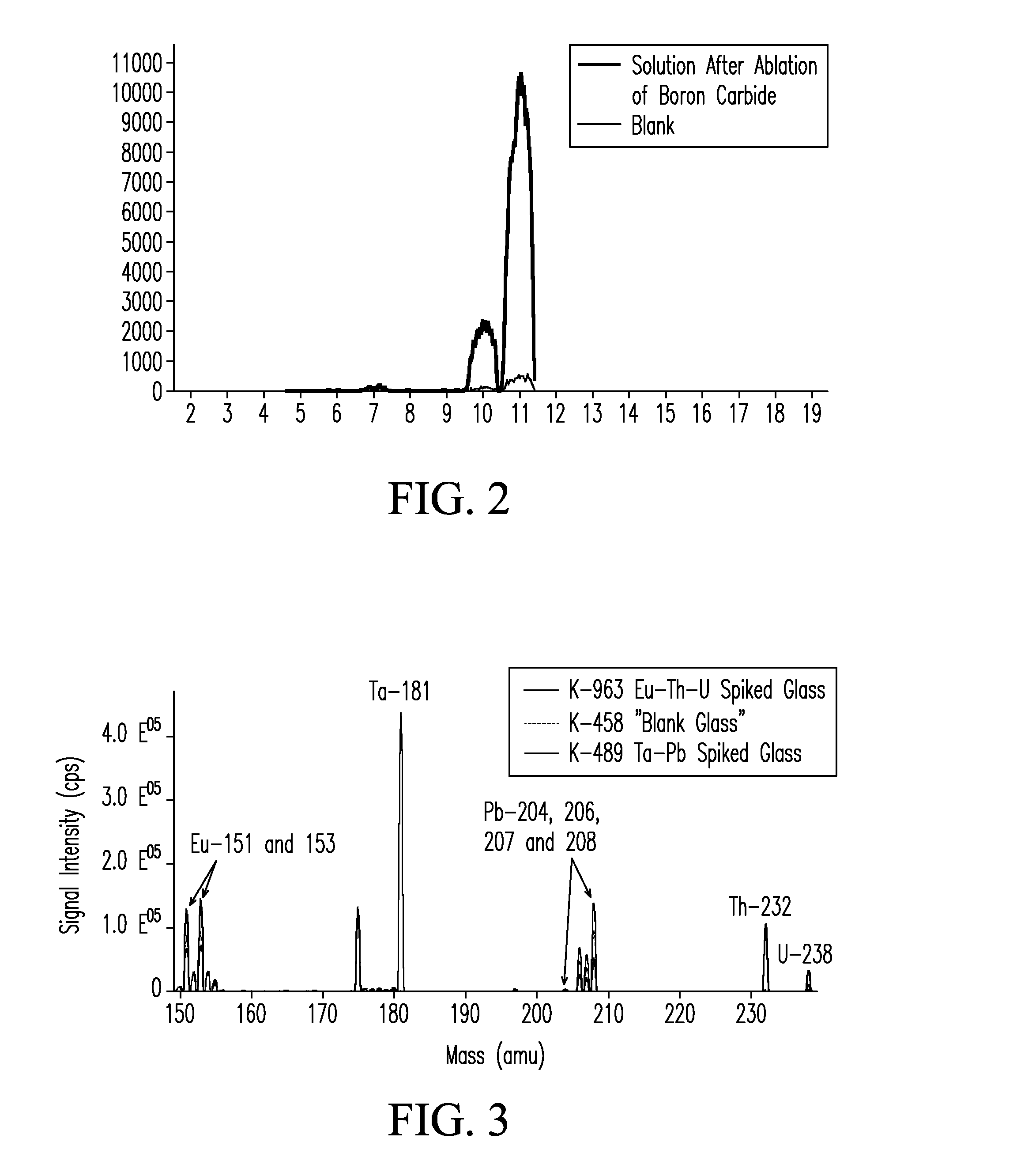System and process for dissolution of solids
a technology of solids and systems, applied in the field of solids dissolution, can solve the problems of difficult dissolution of solids, and difficult quantification, and achieve the effect of stable measuremen
- Summary
- Abstract
- Description
- Claims
- Application Information
AI Technical Summary
Benefits of technology
Problems solved by technology
Method used
Image
Examples
example 1
Dissolution and Analysis of Boron Carbide
[0042]A ˜5 mm (diameter) sample of boron carbide was placed in the laser ablation cell of FIG. 1. The ablation laser was set to raster scan the surface of the boron carbide sample at an energy of 5 Joules / cm2 and a repetition rate of 10 Hz. Laser spot size was 350 μm. Boron carbide particles were swept from the ablation cell during ablation using an argon-air flow at a flow rate of 0.8 L / min into an inductively coupled (argon) plasma operating at an applied RF frequency of 27.12 MHz and a power of 850 Watts. A strong green emission characteristic of the C2 species was visible in the tail flame of the plasma during ablation that disappeared immediately after ablation was completed. Exhaust gas from the plasma was drawn through a glass frit into a volume (˜15 mL) of deionized (18.2 MΩ) water. Exhaust gas was delivered into the deionized water volume at a flow rate sufficient to cause vigorous bubbling of the resulting solution, but sufficiently...
example 2
Dissolution of Solid Glasses
[0043]In another test, glass samples from three SRM 1873 series BaO—ZnO—SiO glasses (e.g., K-458, K-489, and K-963, National Institute for Standards & Technology, Gaithersburg, Md., USA) were introduced into the system of FIG. 1. Glass K-458 is a “blank” glass. Glass K-489 is spiked with elevated levels of tantalum (Ta) and lead (Pb). Glass K-963 is spiked with elevated levels of Europium (Eu), Thorium (Th), and Uranium (U). Each glass was introduced into the LA device, ablated for a period of 40 minutes, and atomized in the ICP. The exhaust from the ICP containing atomized solids was delivered in a carrier gas into an aqueous fluid containing de-ionized water as described in EXAMPLE 1. Three solutions containing the dissolved glass solids were obtained. Each solution was then analyzed by ICP-MS. FIG. 3 shows the mass spectra for each of the three prepared glass solutions overlaid in a single spectrum over a mass range from 149 to 239. Blank glass K-458 i...
example 3
Isotopic Ratio Analysis of U-235 / U-238 Solids
[0044]In another test, a glass wafer of a uranium standard reference material (SRM) containing trace elements of uranium 235 and uranium 238 in a glass matrix (e.g., SRM-610, National Institute of Standards & Technology (NIST), Gaithersburg, Md., USA) at a concentration of about 500 mg / kg (ppm) was introduced into the system of FIG. 1. The sample was ablated by rastering over the surface of the glass wafer for a period of 30 minutes at a laser power of 5 Joules / cm2. Laser beam spot size of 350 μm. Glass particles were swept from the laser ablation cell during ablation using an air-argon flow rate of 0.8 L / min into an inductively coupled (argon) plasma operating at an applied RF frequency of 27.12 MHz and a power of 1000 Watts. A strong orange emission characteristic of the sodium D-line emission from sodium in the glass was visible in the tail flame of the plasma during ablation. The emission disappeared immediately following ablation. Ex...
PUM
| Property | Measurement | Unit |
|---|---|---|
| Temperature | aaaaa | aaaaa |
| Temperature | aaaaa | aaaaa |
| Temperature | aaaaa | aaaaa |
Abstract
Description
Claims
Application Information
 Login to View More
Login to View More - R&D
- Intellectual Property
- Life Sciences
- Materials
- Tech Scout
- Unparalleled Data Quality
- Higher Quality Content
- 60% Fewer Hallucinations
Browse by: Latest US Patents, China's latest patents, Technical Efficacy Thesaurus, Application Domain, Technology Topic, Popular Technical Reports.
© 2025 PatSnap. All rights reserved.Legal|Privacy policy|Modern Slavery Act Transparency Statement|Sitemap|About US| Contact US: help@patsnap.com



